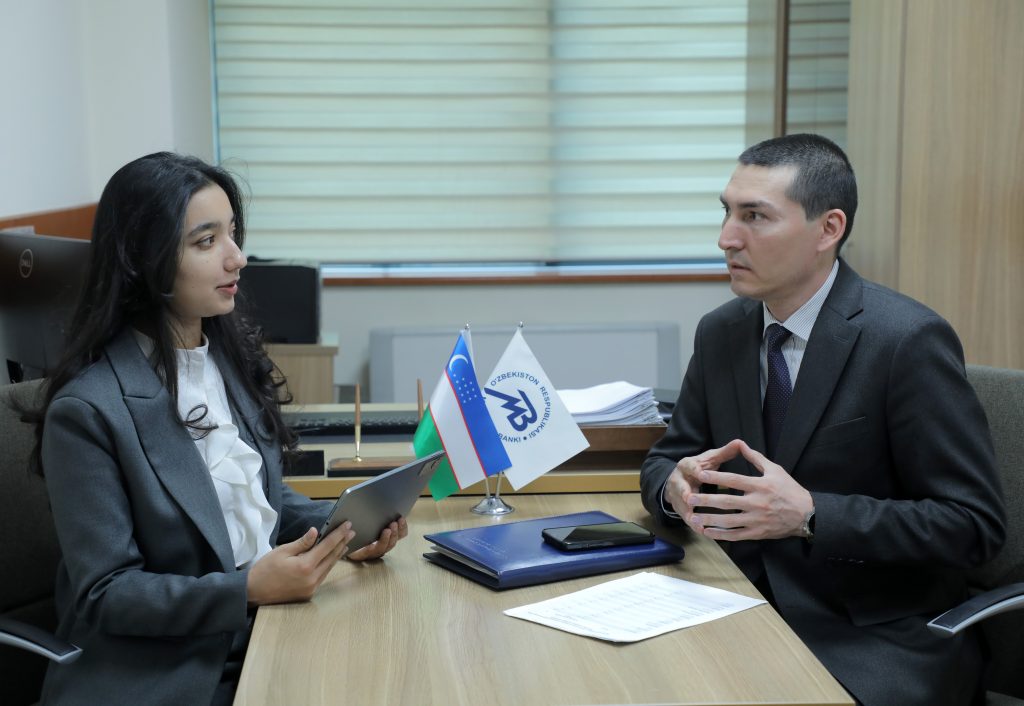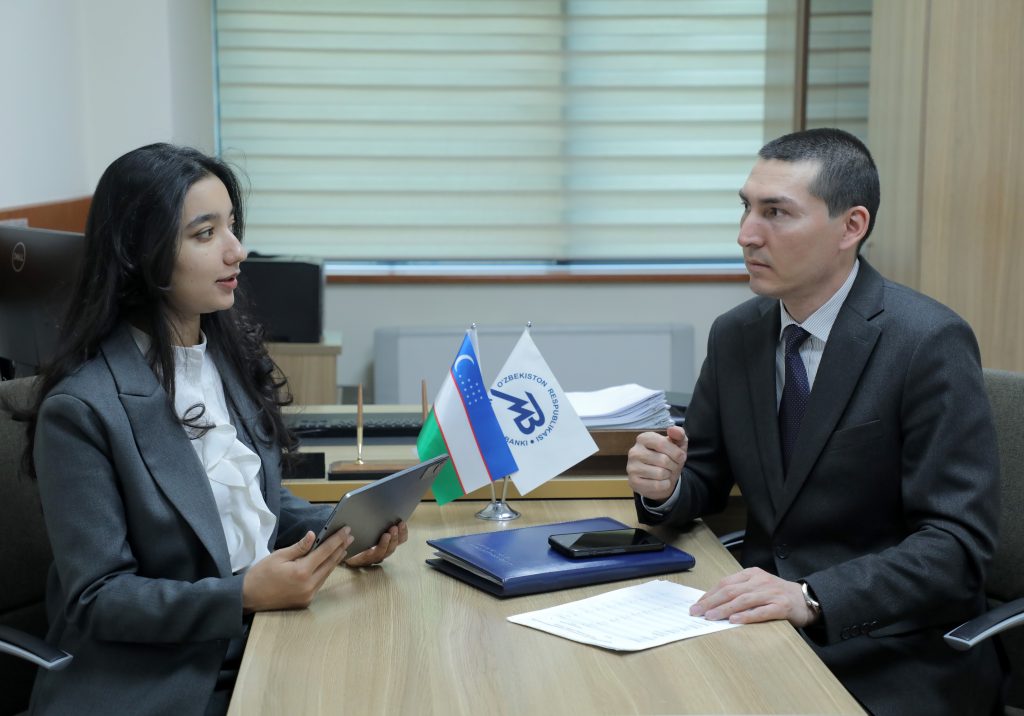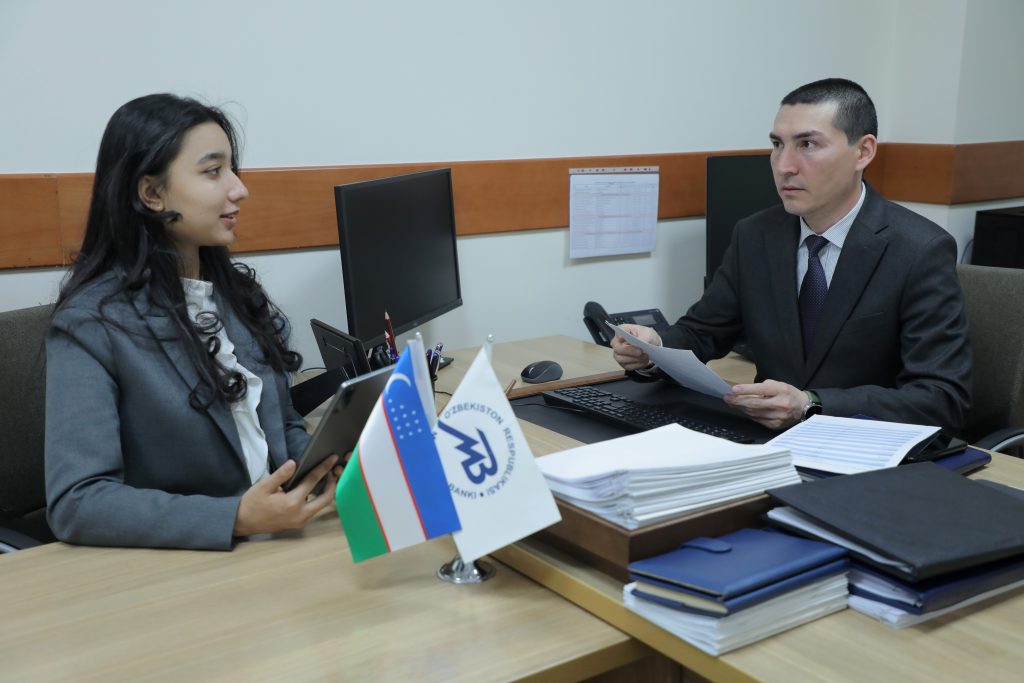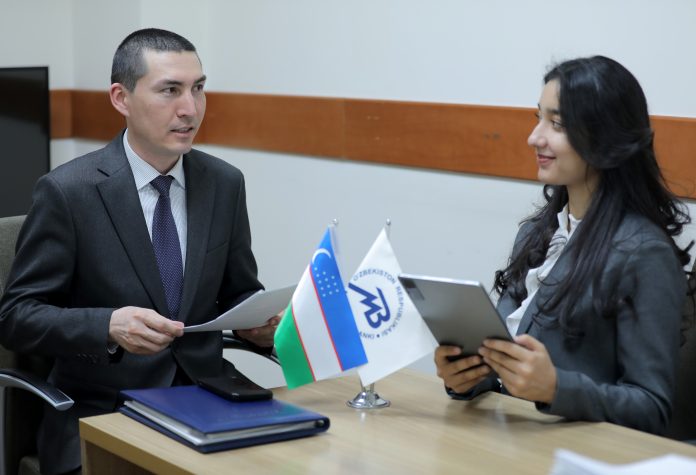Brief Introduction
Nazarov Akmal Narimanovich, born on January 25, 1984, in Tashkent, Uzbekistan,has been the Director of the Public Relations and Communication Policy Department at the Central Bank of the Republic of Uzbekistan since May 15, 2020. With a robust educational foundation in International Journalism and Public Relations, he earned his Bachelor’s degree from Uzbekistan State World Languages University and a Master’s degree from the National University of Uzbekistan named after Mirzo Ulugbek.
Akmal’s linguistic prowess extends to Russian and English, supporting his extensive experience in public relations and journalism. His professional journey began in 2004 as a commentator at the Uzbekistan National News Agency. Over the years, Akmal has worn many hats, including Editor-in-Chief of “Банковские вести” newspapers, editor at “Market, Money and Credit” magazine, and senior inspector at the State Tax Committee of Uzbekistan.
His career in public relations and communication is a testament to his significant contributions and unwavering dedication. Now at the Central Bank, Akmal continues to enhance the department’s communication strategies and policies, driving progress and innovation.
This interview was conducted by Mekhrangiz Nazarillaeva for the London Post. We extend our gratitude to Mr. Akmal for his time. Thank you.

London Post:What is your approach to developing a comprehensive public relations strategy that aligns with the Central Bank’s objectives and enhances its public image?
Nazarov Akmal Narimanovich: In crafting the Central Bank of the Republic of Uzbekistan’s Communication Strategy for 2023-2025, we focused on aligning with the bank’s goals and enhancing its public image. We started with an audit of the Central Bank’s current image and how it is perceived by the public and target audiences, assessing the strengths and weaknesses of the existing communication strategies. This analysis led us to identify key target groups: the general public, business community, government, international partners, and media.
Our main objective is to boost trust in the Central Bank and bolster its reputation for stability and reliability within the banking system. To achieve this, we developed core messages, chose effective communication channels, and forged partnerships with academic and expert communities, among others.
The comprehensive strategy is designed to resonate with these audiences and elevate the Central Bank’s standing in both domestic and international spheres.
LP:How would you ensure effective communication of regulatory changes to both the financial sector and the general public? What methods would you employ?
AN:For effective communication of regulatory changes in the financial sector and to the public, the Central Bank of Uzbekistan uses a comprehensive approach that includes:
• A dedicated section on the official website
• Press releases and publications
• Explanatory events (media briefings with the press, meetings with the academic community)
• Active use of social media.
LP:Describe a past experience where you managed a communication crisis. What steps did you take, and what was the outcome?
AN:We encountered both successful and unsuccessful cases. From each case, we extracted “lessons” and drafted an action plan for crisis situations in the communication strategy. One successful example is the communication surrounding the bankruptcy of two banks. The Central Bank had prepared a communication script in advance: publishing press releases, providing daily updates to the public on the situation, arranging interviews with responsible employees, publishing all contact information, monitoring the media space, and responding accordingly.
LP:How do you plan to build and maintain strong relationships with key stakeholders, including government officials, media, and financial institutions?
AN:Based on the adopted communication strategy of the Central Bank, which includes establishing connections with partners, the government, business, etc., we have built trusting relationships with all communication participants. We will continue along this course, further strengthening these solid ties.

LP:What strategies would you implement to increase public awareness and understanding of the Central Bank’s roles and functions?
AN:The existing communication channels fully align with our vision of communication policy. In the context of a complete public understanding of the Central Bank’s measures, there is potential to enhance work in the field of financial literacy, as well as to involve influencers.
LP:In an increasingly digital world, how do you plan to leverage social media and other digital platforms to enhance the Central Bank’s communication efforts?
AN:We are present on all popular social networks in Uzbekistan. In most of them, we hold the status of an official information source. We actively manage all pages and communicate with the public through them. The numbers speak for themselves. For example, over the past year, the total number of subscribers on Facebook, Instagram, LinkedIn, YouTube, and Telegram has doubled compared to the previous year.
LP:How would you approach building and leading a high-performing communication team? What qualities do you believe are essential in your team members?
AN:The key qualities of team members include communication skills and creativity. These are essential for developing creative approaches to covering banking initiatives. Flexibility and stress resilience are also important, as working in communications requires prompt responses to unexpected situations and readiness to work under high pressure. Responsibility and results orientation are crucial: team members must understand the importance of their roles and be prepared to see their tasks through to completion while maintaining high-quality standards. Analytical skills are also essential: the ability to analyze data to justify decisions and improve communication strategies based on metrics and feedback.
LP:What metrics or KPIs would you use to evaluate the success of public relations initiatives and communication policies?
AN:One of the main indicators of effectiveness is the number of publications in the media and audience reach: the number of publications, news items, and reports in various media, along with audience reach for each publication to understand how many people have seen the Bank’s messages. Social media mentions are also key: the number and sentiment of mentions (positive, neutral, negative) help track how often the Bank’s initiatives are discussed and in what context. Another important indicator is the effectiveness of crisis communications: the speed of response to crisis situations and assessment of their impact on reputation. Lastly, the quality of engagement and audience satisfaction: feedback from the audience and the average response time to inquiries from the media, citizens, and organizations, as well as to comments on social media.
LP:Given the diverse demographic of Uzbekistan, how would you ensure that your communication strategies are culturally sensitive and inclusive?
AN:For cultural inclusivity in our communications, we use multilingual communication. All key messages, press releases, and materials are published in Uzbek and Russian, with some translated into other widely spoken languages. The Central Bank ensures the website, mobile application, and social media accounts are available in multiple languages so users can select the language most convenient for them. Additionally, the website is accessible to people with visual and hearing impairments. To reach all social groups, the Central Bank has organized a Department for Financial Accessibility. Employees of this department conduct seminars and training sessions for vulnerable groups in all regions of the country.

LP:Where do you see the role of public relations and communication evolving in the banking sector over the next five years, and how would you prepare the Central Bank to adapt to these changes?
AN:Public relations is a dynamic field that constantly evolves in response to changes in technology, society, and business practices. Looking five years into the future, it’s clear that the PR landscape will differ significantly from today. Social media will continue to play a central role in public relations. In five years, citizen journalism will play an even more important role in the media space. Due to relatively easy access to the end audience, the publishing model (i.e., preparing the final product for the audience without intermediaries such as media) will become a good practice for press offices. Additionally, I believe that more press offices will use CRM systems in their communications. Finally, AI-based tools will be the most popular for content creation.






